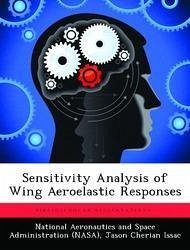Design for prevention of aeroelastic instability (that is, the critical speeds leading to aeroelastic instability lie outside the operating range) is an integral part of the wing design process. Availability of the sensitivity derivatives of the various critical speeds with respect to shape parameters of the wing could be very useful to a designer in the initial design phase, when several design changes are made and the shape of the final configuration is not yet frozen. These derivatives are also indispensable for a gradient-based optimization with aeroelastic constraints. In this study, flutter characteristic of a typical section in subsonic compressible flow is examined using a state-space unsteady aerodynamic representation. The sensitivity of the flutter speed of the typical section with respect to its mass and stiffness parameters, namely, mass ratio, static unbalance, radius of gyration, bending frequency, and torsional frequency is calculated analytically. A strip theory formulation is newly developed to represent the unsteady aerodynamic forces on a wing. This is coupled with an equivalent plate structural model and solved as an eigenvalue problem to determine the critical speed of the wing. Flutter analysis of the wing is also carried out using a lifting-surface subsonic kernel function aerodynamic theory (FAST) and an equivalent plate structural model. Finite element modeling of the wing is done using NASTRAN so that wing structures made of spars and ribs and top and bottom wing skins could be analyzed. The free vibration modes of the wing obtained from NASTRAN are input into FAST to compute the flutter speed. An equivalent plate model which incorporates first-order shear deformation theory is then examined so it can be used to model thick wings, where shear deformations are important. The sensitivity of natural frequencies to changes in shape parameters is obtained using ADIFOR. A simple optimization effort is made towards obtaining a minimum weight des








